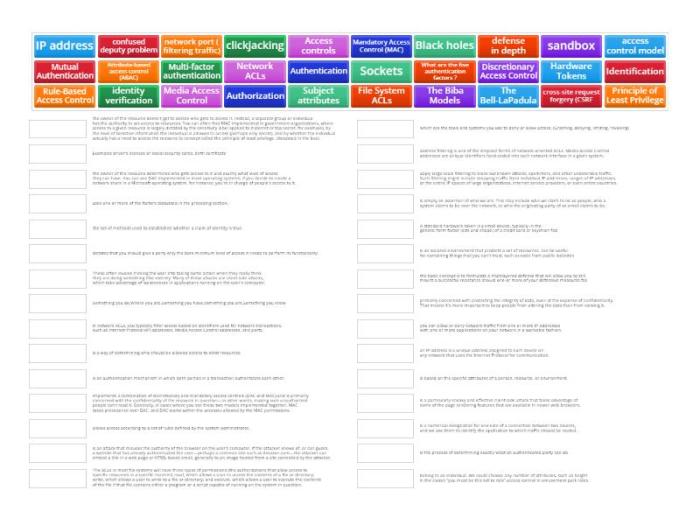In the realm of cybersecurity, the fundamentals of information security – D430 stand as a cornerstone, providing the knowledge and techniques essential for protecting sensitive data and ensuring the integrity of information systems. This comprehensive guide delves into the core concepts, threats, vulnerabilities, and best practices that shape the field of information security, empowering individuals and organizations to safeguard their digital assets effectively.
As we navigate an increasingly interconnected world, the importance of information security cannot be overstated. Breaches and cyberattacks pose significant risks to businesses, governments, and individuals alike. Understanding the fundamentals of information security is paramount to mitigating these risks and ensuring the confidentiality, integrity, and availability of critical data.
Core Concepts of Information Security

Information security is the practice of protecting information from unauthorized access, use, disclosure, disruption, modification, or destruction.
The CIA triad is a model for information security that defines three key objectives: confidentiality, integrity, and availability.
Confidentiality refers to the protection of information from unauthorized access or disclosure.
Integrity refers to the protection of information from unauthorized modification or destruction.
Availability refers to the protection of information from unauthorized denial of access.
Risk management is a process of identifying, assessing, and mitigating risks to information systems.
Risk management helps organizations to prioritize their security efforts and make informed decisions about how to protect their information assets.
Threats and Vulnerabilities
Threats to information security include malware, phishing, and social engineering.
Malware is malicious software that can damage or steal information from a computer system.
Phishing is a type of cyberattack that uses email or other electronic communication to trick people into revealing their personal information.
Social engineering is a type of cyberattack that uses psychological tricks to manipulate people into giving up their personal information or access to their computer systems.
Vulnerabilities are weaknesses in a computer system that can be exploited by attackers to gain unauthorized access to information or systems.
Strategies for mitigating threats and reducing vulnerabilities include using firewalls, antivirus software, and intrusion detection systems.
Security Controls
| Type of Control | Purpose | Examples |
|---|---|---|
| Access Control | Restrict access to information and systems to authorized users | Passwords, biometrics, role-based access control |
| Encryption | Protect information from unauthorized access by encrypting it | SSL/TLS, PGP, AES |
| Intrusion Detection Systems | Detect and respond to unauthorized access attempts | IDS, IPS, SIEM |
Implementing a layered approach to security controls provides multiple layers of protection and makes it more difficult for attackers to compromise a system.
Security Best Practices
Best practices for password management include using strong passwords and rotating them regularly.
Firewalls, antivirus software, and intrusion detection systems help to protect information systems from external threats.
Secure system configuration and patch management help to protect information systems from vulnerabilities.
Incident Response and Recovery
| Step | Description |
|---|---|
| Preparation | Develop an incident response plan and train staff on how to respond to security incidents |
| Detection | Detect and identify security incidents |
| Containment | Contain the incident to prevent further damage |
| Eradication | Eradicate the cause of the incident |
| Recovery | Restore the affected systems and data |
| Lessons Learned | Review the incident and identify ways to improve the incident response process |
Documenting and reporting security incidents is important for tracking the incident and identifying trends.
Disaster recovery and business continuity planning help to minimize the impact of security breaches.
Legal and Regulatory Compliance, Fundamentals of information security – d430
Key regulations related to information security include GDPR and HIPAA.
GDPR is the General Data Protection Regulation, a European Union regulation that protects the personal data of EU citizens.
HIPAA is the Health Insurance Portability and Accountability Act, a US law that protects the privacy of health information.
Non-compliance with these regulations can result in fines and other penalties.
Strategies for achieving and maintaining regulatory compliance include implementing appropriate security controls and conducting regular risk assessments.
Essential Questionnaire: Fundamentals Of Information Security – D430
What is the CIA triad?
The CIA triad is a model for information security that emphasizes the importance of confidentiality, integrity, and availability.
What are the most common threats to information security?
Common threats to information security include malware, phishing, social engineering, and hacking.
What are the key steps involved in an incident response plan?
Key steps in an incident response plan include detection, containment, eradication, and recovery.

